Cotton is one of the essential fibers and cash crops in India. It plays a significant role in the agricultural and industrial economy of the country, and it provides the primary raw material to the Cotton textile industry. It provides direct livelihood to 6 million farmers in India. About 40 to 50 million people are also employed in the Cotton trade and textile processing industry. Cotton is a water-thirsty crop; around 6% of the water for irrigation is used for its cultivation.
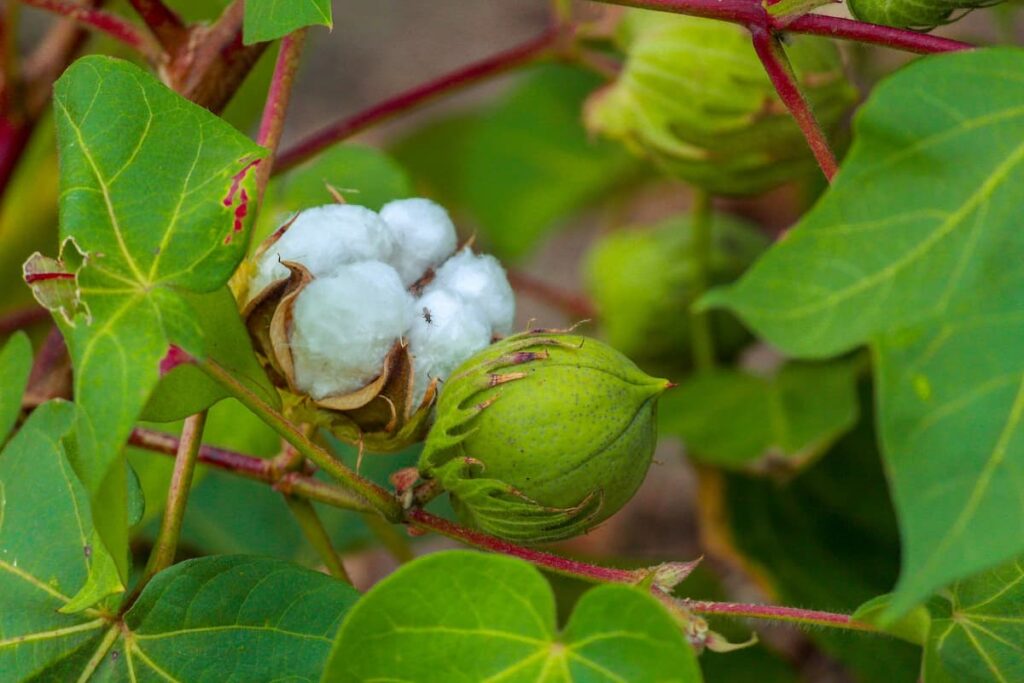
In India, it is grown on a large scale in Maharashtra, Gujarat, Karnataka, Madhya Pradesh, Punjab, Rajasthan, Haryana, Tamil Nadu, and Uttar Pradesh. Gujarat is the largest producer of Cotton, followed by Maharashtra and Punjab. Below are some of the hybrid Cotton varieties which give high yields.
High yield Hybrid Cotton varieties in India
Hybrid Cotton varieties
RCH 134BT
It is high yielding Bt Cotton variety. It is resistant to bollworm and American bollworm and matures in 160-165 days. It has very good fiber property with 34.4% ginning outturn. It gives an average yield of 11.5 quintals per acre of seed Cotton per hectare.
RCH 317BT
It is high yielding Bt Cotton variety. It is also resistant to spotted bollworms and American bollworms. It matures in 160-165 days. The Boll size is about 3.8 cm with an excellent fluffy opening. This variety gives an average yield of 10.5 quintals per acre and gives a 33.9% of ginning outturn.
MRC 6301BT
It is high yielding Bt Cotton variety. It is resistant to spotted bollworms and American bollworms. It matures in 160-165 days. Boll size of 4.3 g. It gives an average yield of 10 quintals per acre and 34.7% ginning outturn.
In case you missed it: Cotton Cultivation; Planting, Harvesting Guide
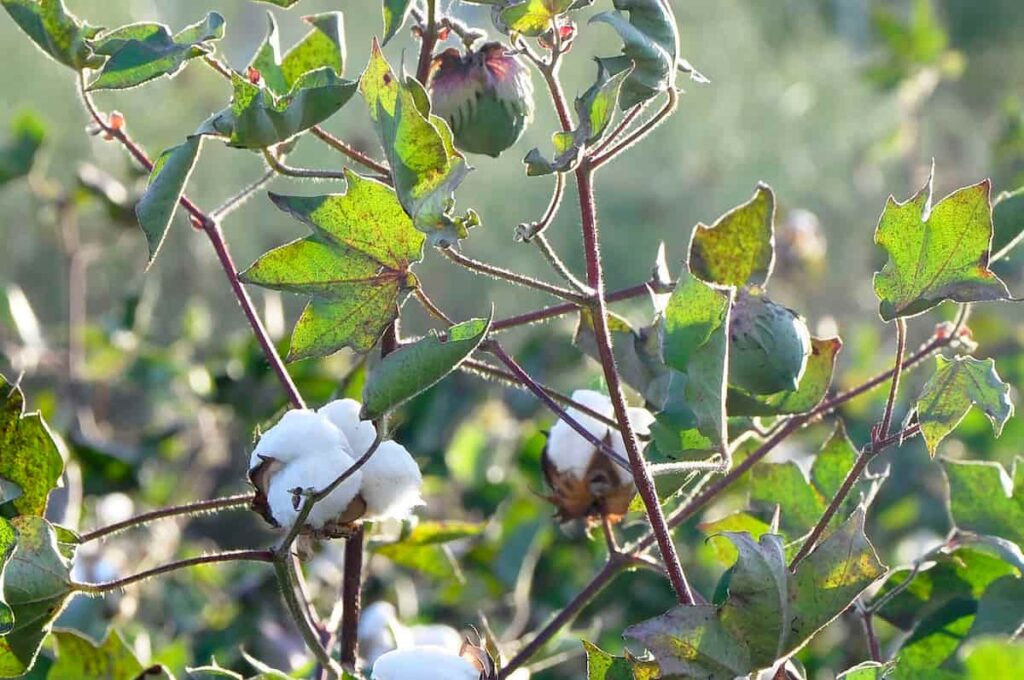
MRC 6304BT
It is high yielding Bt Cotton variety. It is resistant to spotted bollworms and American bollworms. It matures in 160-165 days. Boll size of 3.9 g. It gives an average yield of 10.1 quintals per acre and 35.2% ginning outturn.
Ankur 651
It is Jassid tolerant and leaf curl-resistant hybrid. The plant is 97 cm in height and matures in 170 days. This variety is most suitable for Cotton-wheat rotation. This hybrid variety gives an average yield of 7 quintals per acre and 32.5% ginning outturn.
Whitegold
It is hybrid and tolerant to leaf curl virus disease. It has dark green broad, lobed leaves. This plant’s average height is about 125 cm. This variety gives a Cotton seed yield of 6.5 quintals per acre, and ginning outturn is 30%. This crop matures in 180 days.
LHH 144
It is a leaf curl-resistant hybrid. Leaves are semi-okra lobed types, and the average boll weight is 5.5 gm. It matures in 180 days and is suitable for Cotton-wheat rotation. This hybrid variety gives an average seed yield of 7.6 quintals per acre, and its ginning outturn is 33%.
F 1861
It is a hybrid variety, tolerant to leaf curl virus disease. Its average plant height is 135 cm and it matures in 180 days. It gives an average seed Cotton yield of 6.5 quintals per acre. Its ginning outturn is 33.5%.
F 1378
It is a high-yielding hybrid variety. Its average plant height is 150 cm, and the bolls are round and big with a good fluffy opening. It matures in 180 days. This hybrid variety gives an average yield of 10 quintals per acre, and ginning outturn is 35.5%.
F 846
It is semi spreading, high-yielding variety. Average plant height of 134 cm. It matures in 180 days. This Cotton variety gives an average yield of 11 quintals per acre. The ginning outturn of this Cotton variety is 35.3%.
In case you missed it: Hybrid High Yield Onions Varieties in India: For Rabi, Kharif, Late, and Early Kharif
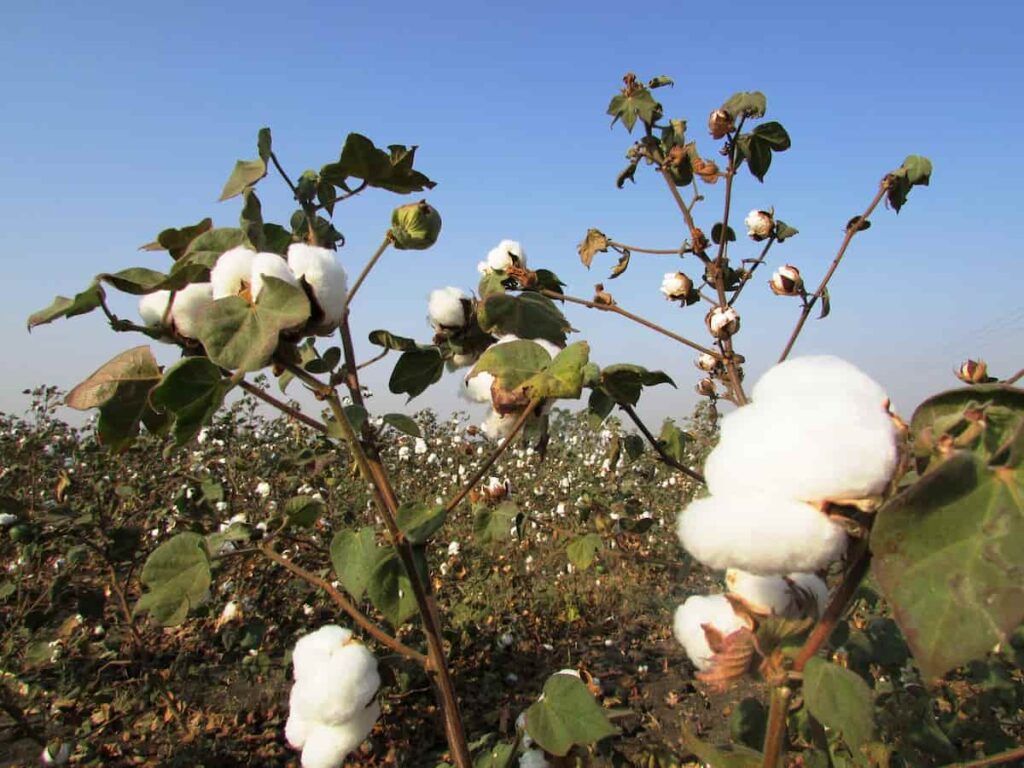
LHH 1556
It is a short-duration early maturing variety. The plant height is about 140 cm. Its leaves are light green, and its bolls are round. This Cotton variety gives a yield of 8.5 quintals per acre. It matures in 165 days.
Moti
It is a Fusarium wilt-tolerant desi Cotton hybrid. Its average plant height is about 164 cm. Leaves are narrow with white flowers. Bolls are large. It matures in 165 days. This variety gives an average yield of 8.45 quintals per acre, and its ginning outturn is 38.6%.
FMDH 9
The plant has a green body with narrow-lobed leaves and white flowers. Its bolls are medium and fluffy opening. This variety is ready to harvest in 160 days. It is resistant to Jassid, whitefly and tolerant to Fusarium wilt and Bacterial blight. Its ginning outturn is 37.3%, and its fiber length is 23.4 mm. It gives an average yield of 10 quintals per acre.
FDK 124
It is also a high-yielding, early-maturing variety, having green and narrowly lobed leaves. This variety is ready to harvest in 160 days. It gives resistance to whitefly and Jassid. Its fiber length is 21 mm, and its ginning outturn of 36.4%. It gives an average yield of 9.3 quintals per acre.
LD 694
It is a desi Cotton variety. Its leaves are narrow with pink flowers, and the bolls are big. This variety matures in 170 days. It gives ginning outturn of 40.9%. It gives an average yield of 7 quintals per acre. This variety is highly tolerant to Fusarium wilt and resistant to Jassid.
LD 327
It is high yielding variety. Its plants have reddish brown, narrow-lobed deep, cut leaves with pink flowers and big, easy-picking bolls. It matures in 175 days. Tolerant to Fusarium wilt. It gives an average yield of 11.5 quintals per acre and gives ginning percent of 41.9.
LD 1019
This variety is resistant to shattering. It gives an average yield of 8.6 quintals per acre. It requires 2 to 3 pickings. Its fiber length is 22.6 mm, and its ginning outturn is 35.77%.
BCHH 6488 BG II
It is a hybrid having green narrow-lobed leaves with cream flowers. It is ready to harvest in 165 to 170 days. It gives ginning outturns of 34.5% and a fiber length of 27 mm. But it is susceptible to Cotton leaf curl and affected by a high incidence of para wilt.
In case you missed it: How to Start Polyculture Fish Farming In India: Composite Fish Culture, Mixed Fish Farming Examples, Benefits, and Disadvantages
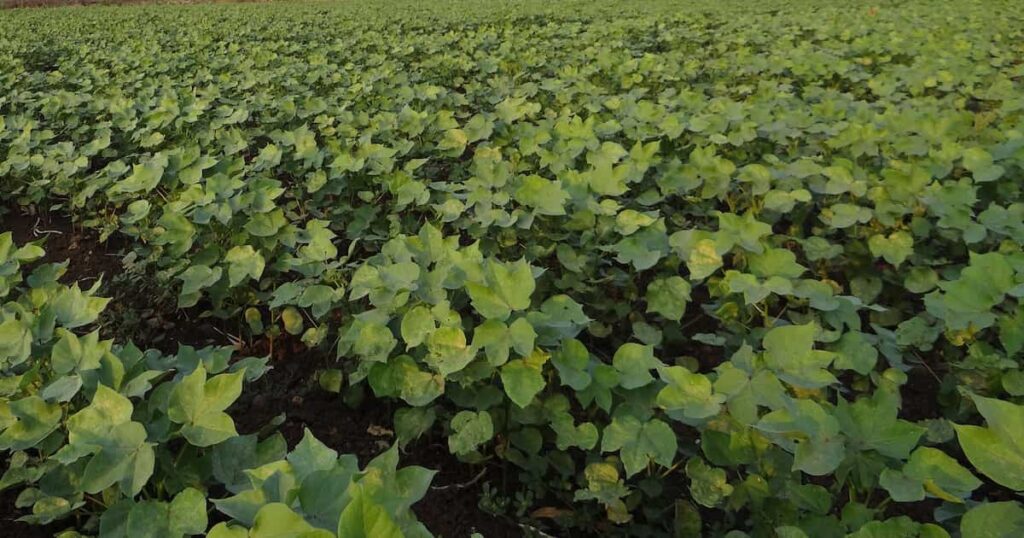
PAU Bt 1
It is the first Bt Cotton variety developed in the public sector. It gives an average yield of 11.2 c of seed Cotton. The variety is moderately resistant to Cotton curl disease. The boll size is 4.3 grams, and ginning outturn is 41.4%.
RCH 650 BG II
It is a high-yielding Bt Cotton hybrid that gives resistance against American, pink, and spotted bollworms, also against tobacco caterpillars. It is tolerant to para wilt. Its fiber length is about 28.5 mm and ginning outturn of 36%. It gives an average seed Cotton yield of about 9.7 quintals per acre.
ANKUR 3028 BG II
It is high yielding Bt Cotton hybrid, gives resistance against American, pink, and spotted bollworms, and also against tobacco caterpillars. It is moderately tolerant to leaf curl virus and para wilt. Its fiber length is about 31.3 mm, and its ginning outturn of 31.4%. It gives an average yield of 9.7 quintals per acre.
MRC 7017 BG II
It is high yielding, early maturing variety having resistance to tobacco caterpillars and American, pink, and spotted bollworms. It also gives resistance to leaf curl virus and para wilt. Its fiber quality is good, having a length of 29.7 mm and a ginning outturn of 33.6%. It gives an average yield of 10.4 quintals per acre.
MRC 7031 BG II
It is a high-yielding, early-maturing variety with resistance to tobacco caterpillars and American, pink, spotted bollworms. It also gives resistance to leaf curl virus and is tolerant to para wilt. Its fiber length is 29.4 mm, and ginning outturns are 33.4%. It gives an average yield of 9.8 quintals per acre.
Optimum soil and climatic conditions required to get high yields of Cotton
Cotton can be cultivated on a wide variety of soils across the world. The best soil for growing Cotton is deep, fertile, has high water retention capacity, and good internal drainage. Cotton is sensitive to excessive moisture and waterlogging. Under rainfed conditions, it is generally grown on soils with high water-holding capacity and provides better internal drainage and greater productivity.
Where irrigation is available, it is cultivated on various soils ranging from sandy to sandy loam and clay looms. Cotton being a deep-rooted crop, soil depth of less than 60 cm is considered unfavorable. Cotton grows best on neutral to slightly alkaline soils, and a pH of 7.0 to 8.0 is considered optimum. The minimum pH for successful Cotton cultivation is 5.3. Cotton is sensitive to salinity only during germination and early crop establishment.
The predominant Cotton-growing soils of India are sandy to sandy looms in the north zone, black soils in central India, and a variety of red, alluvial, and mixed red and black soil in the southern zone. Cotton can be grown wherever at least 180 to 200 frost-free days are available. For vegetative growth, the mean daily temperature of 21°C to 27°C is optimum. Day temperatures range from 27°C to 32°C, with cool nights favoring fruiting & boll development.
The Cotton plant’s growth and fiber development are seriously limited when the minimum temperature falls below 15°C. The optimum temperature for peak flowering ranges from 29°C to 34°C. Under adequate soil moisture, Cotton withstands high temperatures of 43°C to 45°C for short periods. Cotton, a tropical plant of arid origin, requires at least 500 mm of mean annual rainfall with uniform distribution.
During the vegetative phase, moderate rainfall is good, whereas heavy rains will affect Cotton quality later. Abundant sunshine is ideal for Cotton production, and cloudiness adversely affects boll setting and growth. Cloudy weather lasting 2 to 8 days causes heavy bud and boll shedding. A decrease in light decreases growth and fruiting and increases leaf anthocyanin content, resulting in low photosynthetic efficiency.
In case you missed it: High Yield Hybrid Chilli Varieties in India: For Rabi, Kharif, Winter, Summer, and Rainy Seasons
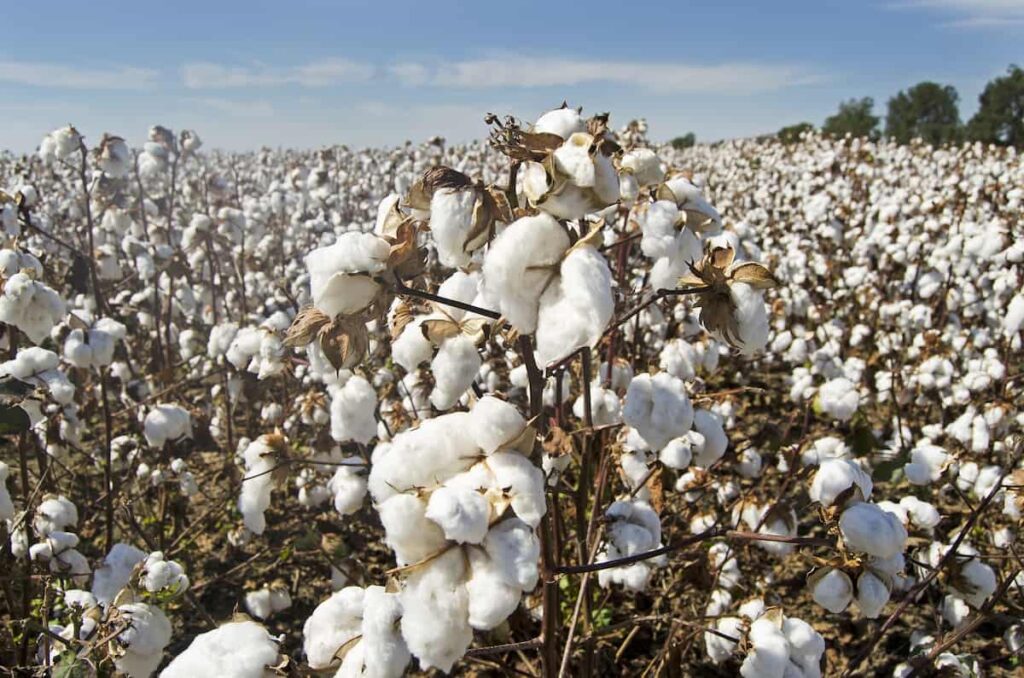
Tips to boost your Cotton yield
Many farmers’ income depends on their Cotton yield every year, but due to a lack of management and knowledge, they are not able to get a good yield. So, here are some valuable tips that will help you to increase your Cotton production.
Get your soil tested and make your soil well-nourished
It is essential to get your soil tested every so that you can know the proper condition of your soil. And provide it with the nutrients that it lacks. It helps you maintain a proper balance of nutrients in your soil. Before the onset of monsoon, the field should be prepared by deep plowing followed by recurrent harrowing and organic manure such as farm yard manure at the time of land preparation, which helps in improving soil texture, aeration in the soil, nutrient uptake, population of helpful microorganisms builds up, and the percentage of organic carbon improves; thus the total health of the soil improves.
Balance the amount of nitrogen in your soil
When it comes to Cotton, a lack of nitrogen or excess nitrogen can decrease your yield. So, you should get your soil tested and maintain the nitrogen balance of your Cotton field.
Choose the seeds and variety wise wisely
Always choose good quality and variety of seeds as good seeds of soil result in good yield. It is advised to plant 2 to 3 varieties of Cotton and get your seeds treated before sowing.
Make sure the soil is warm and has a good amount of moisture
Cotton seeds require warm soil and good moisture to grow, so it is better to ensure that your soil’s temperature As well as makes sure that it has good moisture content.
Plant your seeds properly
Planting the Cotton seeds at a proper depth is essential, as planting them deeper can increase yield time. It is advised to sow them only one or one and a half inches deep in the ground.
Proper irrigation and drainage system
Cotton is generally flood irrigated, although irrigation by furrow is more effective. Water saving and drip irrigation are becoming popular, particularly in the hybrids for central and southern zones. Cotton needs to be irrigated at 50-70% depletion of available soil moisture. Make sure you irrigate your field at the proper times and give it sufficient time. As well as have a proper drainage system so that there isn’t any water stagnant in your field; it can also delay the maturity of your crop.
Keep your field away from the weeds
Always keep your Cotton field away from the weeds, especially at the time of sowing is advised to get rid of weeds and use 2 to 3 layers of herbicides. When the crop canopy has not developed in the first sixty days, weed control is of the utmost importance as weeds compete vigorously with the main crop.
Keep an eye on the pests
Keep an eye on the pests and insects to save your crop from any damage, as these can even cause crop failure. So, it is better to treat them at the earliest.
Harvest management
The best time to harvest Cotton is when the crops are defoliated and most of the bolls open; carry out defoliation as soon as possible to achieve the right balance of Cotton yield and quality. Check seed maturity at the upper Cotton bolls; defoliate when the seed coats are black.
Harvesting Cotton crop
Cotton picking first time should be done when 30% to 35% of bolls are open fully. Picking should be done early in the morning. The second picking should be done 15 to 20 days after the first picking. Southern states begin harvesting Cotton in July, and northern states may harvest it up until November. The Cotton is ready to harvest after about six weeks. Once the bolls crack open, the fluffy white Cotton will be exposed, indicating the Cotton is ready to pick.
Make sure you wear thick gloves before harvesting your Cotton crop. A Cotton boll may shred tender skin due to its sharpness. Pick Cotton from bolls by grasping the Cotton ball at the base and twisting it. Whenever you pick Cotton, bag it as you go. Leave any Cotton that is not ready for harvest until another day. Cotton is not ready to harvest all at once.
After harvesting the mature Cotton, spread it out in a cool, dark area with plenty of air circulation to dry. By hand, separate the Cotton seeds from the Cotton once it has dried. It should be dried for 3 to 4 days in the sun with due care. You are now ready to use your Cotton. Pillows or toys can be stuffed with them or dyed, carded, and spun into fiber.
In case you missed it: How to Fix Sulfur Deficiency in Plants/Soil: Preventing Naturally, Organically, and Chemically
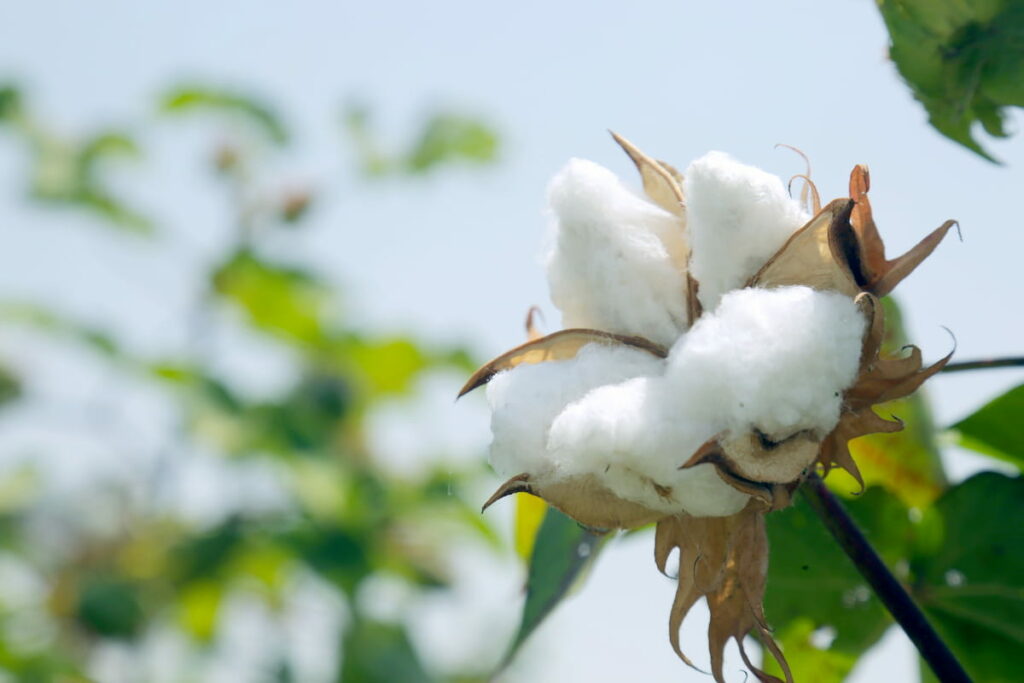
Care while picking and after picking Cotton
- Picking Cotton should be done in the morning because, due to humidity, dried leaves and other trash are not sticking.
- When picking, good quality and fully open bolls should be harvested separately and kept separate. Then pick yellowish Cotton from damaged Cotton bolls separately and keep them separate.
- Cotton of different varieties should be picked separately and kept separately.
- After picking, Cotton should be dried in sunlight for 3 to 4 days and stored in a dry and clean place.
- Cotton should be transported in close or by covering the Cotton properly.
- Also, there should be careful handling and storing to avoid contamination.
Conclusion
This article will give an idea of choosing a good variety of Cotton for your soil and location. This article discussed the high-yielding and good variety of Cotton. These varieties are the best Cotton trending in India and the most liked variety by farmers. If you live in the following regions or states and plan to start cotton farming, this High Yield Hybrid Cotton Varieties in India blog post would be helpful for choosing the right variety for Rabi and Kharif seasons.
| Andhra Pradesh | Karnataka |
| Arunachal Pradesh | Kerala |
| Assam | Madhya Pradesh |
| Bihar | Maharashtra |
| Chhattisgarh | Manipur |
| Goa | Meghalaya |
| Gujarat | Mizoram |
| Central India | South India |
| Haryana | Sikkim |
| Himachal Pradesh | Tamil Nadu |
| Jharkhand | Telangana |
| Nagaland | Tripura |
| Odisha | Uttar Pradesh |
| Punjab | Uttarakhand |
| Rajasthan | West Bengal |
| North India | West India |
- Management Pests and Diseases in Your Cotton Field
- Sheep Farming Business Plan for Beginners
- Aquaponic Farming at Home: A Step-By-Step Guide
- Profitable Village Farming Business Ideas in 2024
- High-Yield Aquaculture: Fast-Growing Fish for Farming
- Effective Fish Pond Construction Techniques for Beginners
- Irrigation and Water Management in Pineapple Farming
- Blossom to Harvest: Mastering Flowering and Pollination in Papaya Farming
- Pig Fattening Essentials: From Selection to Sale for Beginners
- Raising Wagyu Cattle: A Complete Guide for Premium Beef Production
- Soil Types and Their Water Holding Capacity
- Optimizing Irrigation Schedules for Coconut Groves for Enhanced Yield
- Espresso Your Garden: Coffee Grounds for Healthier Acid-Loving Plants
- The Best Soil Mix for Snake Plants: How to Mix Your Own Snake Plant Soil
- Green Thumb Success: Expert Tips for Cultivating Greenhouse Beans All Year Round
- Bloom All Year Round: The Ultimate Guide to Indoor Hyacinth Care
- Eco-Friendly Gardening: How to Make Liquid Fertilizer from Kitchen Waste
- Ultimate Guide to Grow Anise in Pots: Explore Seed Propagation to Harvesting
- Guide to Raising Chester White Pigs: Discover Breed Facts to Growth Management
- Mastering the Elegance: The Ultimate Guide to Weeping Cherry Tree Care, Planting, and Maintenance
- Ultimate Guide to Planting Garlic in Grow Bags: Growing Strategies for Beginners
- How to Fix Spider Plant Leaf-Related Problems: Natural and Organic Remedies
- 10 Reasons Why Your Tulsi Plant is Shedding Leaves: Home Remedies and Solutions
- Optimizing Growth and Yield: The Advantages of Palm Bunch Ash Fertilizer
- Utilizing Neem Oil Extract as a Natural Pesticide for Hydrangea
- From Soil to Harvest: Various Ways in Which Farmers Can Use AI Tools
- Steps to Encourage and Induce Citrus Flowers: A Comprehensive Guide
- How to Fix Snake Plant Leaf-Related Issues: Natural and Organic Remedies
- Transform Your Garden into a Fragrant Oasis with Raat Ki Rani (Night Blooming Jasmine)
- Discover the Ideal Chicken Breeds for Philippine Farms
- How to Create a Poultry Egg Farm Business Plan for Profits
- Grow Lemon Cucumbers Like a Pro: Insider Techniques for Bountiful Yields
- Ultimate Guide to Caring for Your Pink Princess Philodendron: Tips for Thriving Variegation
- Areca Nut Profit Per Acre: Calculating Yield and Cost of Cultivation
- How Kaveri Chicken is Becoming a More Profitable Breed in Indian Backyards
- Transform Your Barn: 9 Steps to Convert a Horse Stall into a Chicken Coop
